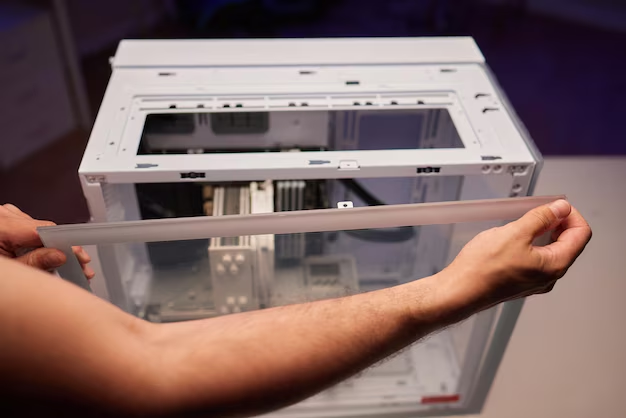How Long Should Your Fridge Rest After Moving? Essential Insights and Tips
Moving to a new place, be it a new home or apartment, is always an exciting adventure filled with possibilities. Yet, amidst the joy of fresh beginnings, certain logistical concerns like the transportation of appliances such as refrigerators can bring a fair share of challenges. After all, ensuring that your fridge is moved safely without inflicting any damage is crucial. One key question many people grapple with is: How long should a refrigerator sit after moving? In this guide, we'll explore this topic in depth, providing you with all the practical tips and insights you need, and discussing related aspects of food storage and refrigerator care.
🏠 The Importance of Letting Your Refrigerator Rest
Moving can shift the internal components of your refrigerator, especially the lubricating fluids inside the compressor. This shift can cause significant issues if the refrigerator is turned on too soon. Allowing your refrigerator to sit after moving ensures these fluids settle back into their proper place, reducing the risk of damage.
Understanding Refrigerator Mechanics
Refrigerators are not just boxes that keep things cold; they are intricate appliances with mechanical and cooling systems. The compressor is the powerhouse, pumping refrigerant through coils around the fridge, enabling the cooling process. If tilted during movement, refrigerant oils can move improperly. Waiting allows for these oils to recirculate, preventing operational hazards.
⏳ Ideal Waiting Period Before Powering Your Fridge
While the wait time may seem trivial, it's actually crucial. Here’s a general guideline:
- Upright Transport: If moved upright, the universal recommendation is to wait approximately 2-4 hours before plugging in your fridge.
- Tilted Movement: If your fridge was transported on its side, lay it down, or if it endured shaking during transit, consider extending the wait to 4-24 hours.
These waiting periods alleviate stress on the refrigerator's internal components, allowing them to settle naturally.
Factors Influencing Wait Time
- Distance and Road Conditions: Long-distance moves or bumpy rides might necessitate a longer wait.
- Age and Model of Refrigerator: Newer models might settle quicker compared to older ones.
- Manufacturer Guidelines: Always check the user manual for any specific recommendations.
🚚 Moving Tips to Prevent Damage
Ensuring a mindful approach to moving can minimize potential damage and reduce wait time:
- Secure the Doors: Use strong tape or straps to ensure doors don’t swing open during transport.
- Use Proper Equipment: Hand-trucks, straps, and helpers minimize strain on the appliance.
- Avoid Tilting: Whenever possible, keep the fridge in an upright position during the move.
- Protective Padding: Use blankets or bubble wrap to shield the surface from scratches or dents.
📦 Food Storage and Safety During Transition
Maintaining food safety while waiting for your fridge to settle is another pressing concern. Here are some strategies to ensure your perishables remain fresh:
Temporary Solutions for Food Storage
- Coolers: Utilize ice-filled coolers to store perishable items temporarily.
- Neighbor’s Refrigerator: If possible, ask a neighbor to accommodate your essentials for a short period.
- Dry Ice: It can sustain cooler temperatures for extended periods if needed.
Tips for Extended Storage
- Label and Date Items: This helps in recognizing food that needs immediate attention post-move.
- Temperature Monitoring: A simple fridge thermometer can ensure the cooler maintains a safe temperature (below 40°F).
🌟 A Quick Recap: Refrigerator Resting Post-Move
Here's a summary of key actions to take when moving your fridge:
- 🚚 Transport Upright: Always try to move the fridge in an upright position.
- ⏳ Wait 2-4 Hours: If upright during transport, allow this standard wait time before plugging in.
- 🛌 Rest Longer if Laid Down: Extend waiting to 4-24 hours for tilted transport.
- 🧊 Use Coolers: Store perishables in coolers to keep them fresh.
- 📖 Follow Manufacturer's Instructions: Check and adhere to any specific guidelines provided in your appliance's manual.
💡 Practical Tips for Maintaining Your Refrigerator
Once your refrigerator is safely situated and powered on, there are a few best practices to keep it operating smoothly:
Regular Maintenance
- Consistent Cleaning: Clean the interior and exterior periodically to ensure hygiene and efficiency.
- Check Seals: Inspect the door gaskets for leaks, which can lead to temperature fluctuations.
- Clear Vents: Ensure that air vents are unblocked to enable smooth air circulation.
Energy Efficiency Considerations
- Temperature Settings: Set your fridge temperature to maintain food at the ideal cooling—generally around 37°F (3°C) for the fridge and 0°F (-18°C) for the freezer.
- Avoid Overloading: Too many items can constrain air circulation, impacting cooling efficiency.
- Positioning: Place your fridge in a well-ventilated area away from direct sunlight and heat sources to optimize energy use.
Enhancing Food Shelf Life
- Organize Strategically: Place items that need to be used soon at the front.
- Store Wisely: Keep raw meat in separate containers to prevent cross-contamination.
- Use Vacuum Seals: This can help prolong the freshness of items by reducing exposure to air.
🍽️ Reflecting on Refrigerator Health and Food Safety
The care you take in moving and maintaining your refrigerator directly impacts its longevity and efficiency. By understanding the why and how of allowing your refrigerator to rest after moving, you not only protect your appliance but also safeguard your food supply. With a focus on maintaining proper food storage, you can enhance the shelf life of your groceries, ensuring meals are fresh and inviting.
Your refrigerator's journey from its old home to a new one is dotted with important steps. By recognizing and respecting these crucial moments, you elevate not only the health of your appliance but the overall quality of life in your new abode. After all, a well-maintained refrigerator is more than just a convenience; it's a cornerstone of a healthy, thriving household. 🍏
By mindfully implementing these insights and practices, you ensure your refrigerator remains a reliable companion in your culinary adventures, keeping every encounter with meal prep joyful and effortless.
